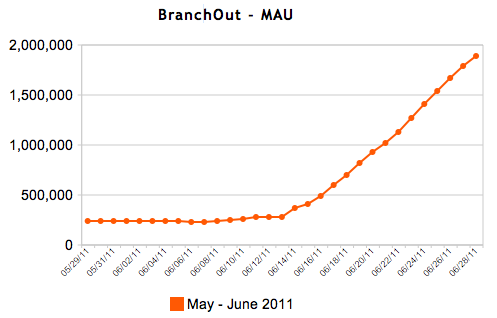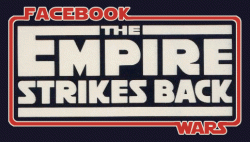The war to bring career opportunities to Facebook’s over 750 million users is on in a big way here at SHRM Conference.Sunday, Monster launched BeKnown, an app that lets Facebook users harness their social graph to find a new job. If this sounds familiar, its because it is exactly what BranchOut has been offering since its public launch in January.
When two products are as similar as BeKnown and BranchOut, it’s only natural to start comparing them, (and Monster helpfully provided Bloggers with a cheatsheet) but the real elephant in the room is LinkedIn. Both Monster and BranchOut are convinced that the future of professional social networking lies through Facebook’s social graph, not LinkedIn’s network of connections..
But the truth is that they have no choice. Unlike Facebook, LinkedIn’s business model relies heavily on recruiting for revenue, and there is no way that they would allow companies with similar designs to build a business using their proprietary relationship data.
Tom Chevalier, the product manager for BeKnown at Monster, told me that they created BeKnown in response to the demand from their users on Facebook. However, Monster views this as an answer to LinkedIn and BranchOut, and also an opportunity to extend the reach of its existing job network. In fact, Tom just changed his job title on LinkededIn to Product Manager yesterday, but his Twitter bio still reads “Job Distribution Strategy @ Monster.”
Both Beknown and BranchOut have elements of the traditional job board in their offerings. They both plan to gather more job postings native to their applications, but right now both are relying on sources that are outside their apps for job listings — BeKnown lets users search Monster’s jobs, while Branchout relies on Indeed to backfill their job listings. They also let users connect to each to network their way into a job. They feel very much like LinkedIn circa early 2008.
 At the time, LinkedIn had been criticized as being too static — a place where people “connected” professionally and maintained a resume, but did little else.
At the time, LinkedIn had been criticized as being too static — a place where people “connected” professionally and maintained a resume, but did little else.
Since then, the company has extended its offerings to better engage its users, most notably with the runaway success of LinkedIn Groups in August 2008 and more recently the launch of LinkedIn Daily in March of this year. The user base interacts more frequently on LinkedIn now, and this propelled the site past the 100 million user mark earlier this year.
BranchOut and BeKnown have both embraced game mechanics to incentivize Facebook users to use their respective services, but as they exist today, it is hard to see how they are going to get that kind of repeat use. These services call themselves social networks, but will users use them to truly network their way into jobs? Or are they just a clever way to latch on to Facebook’s incredible user base to grow very traditional job boards, with most of the actual use in the form of job searches and viewing employer profiles?
 When I spoke with CEO Rick Marini, he touted this chart of BranchOut’s monthly app users as evidence that its growth has exploded since they made some changes a few weeks ago to make the product “less spammy.”
When I spoke with CEO Rick Marini, he touted this chart of BranchOut’s monthly app users as evidence that its growth has exploded since they made some changes a few weeks ago to make the product “less spammy.”
The growth is impressive. (BeKnown just launched Sunday, so there is no comparable chart, but right now Facebook says that there are 6,434 monthly users.)
But there’s another chart that’s also interesting — it’s the percent of those monthly BranchOut app users that have been coming back each day. And it looks like most of those new users are not sticking around for long.
BranchOut and BeKnown are both interesting offerings, but if they are going to effectively compete with LinkedIn, they are going to have to follow in LinkedIn’s footsteps and find a way to build a more lasting connection with Facebook’s users
